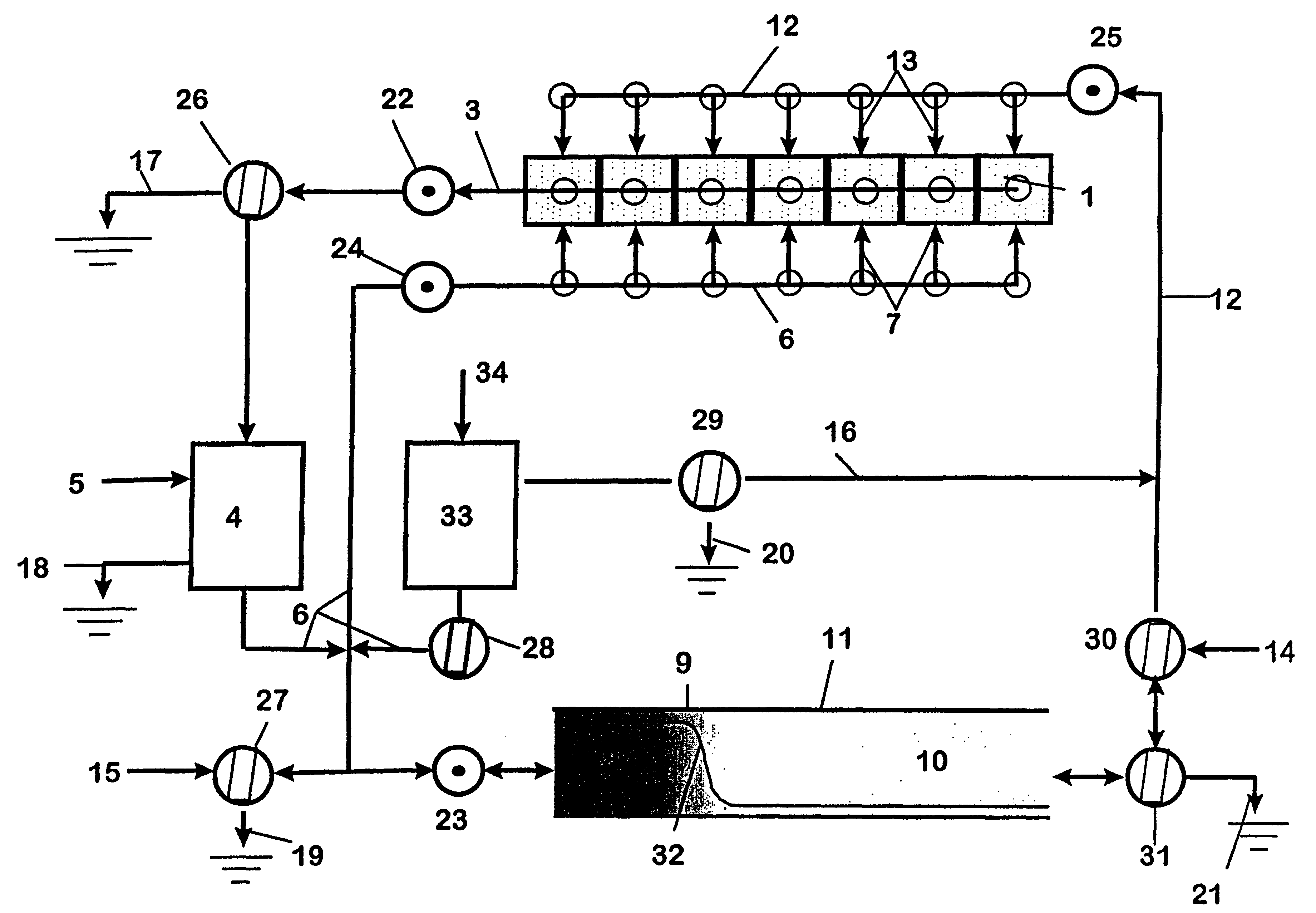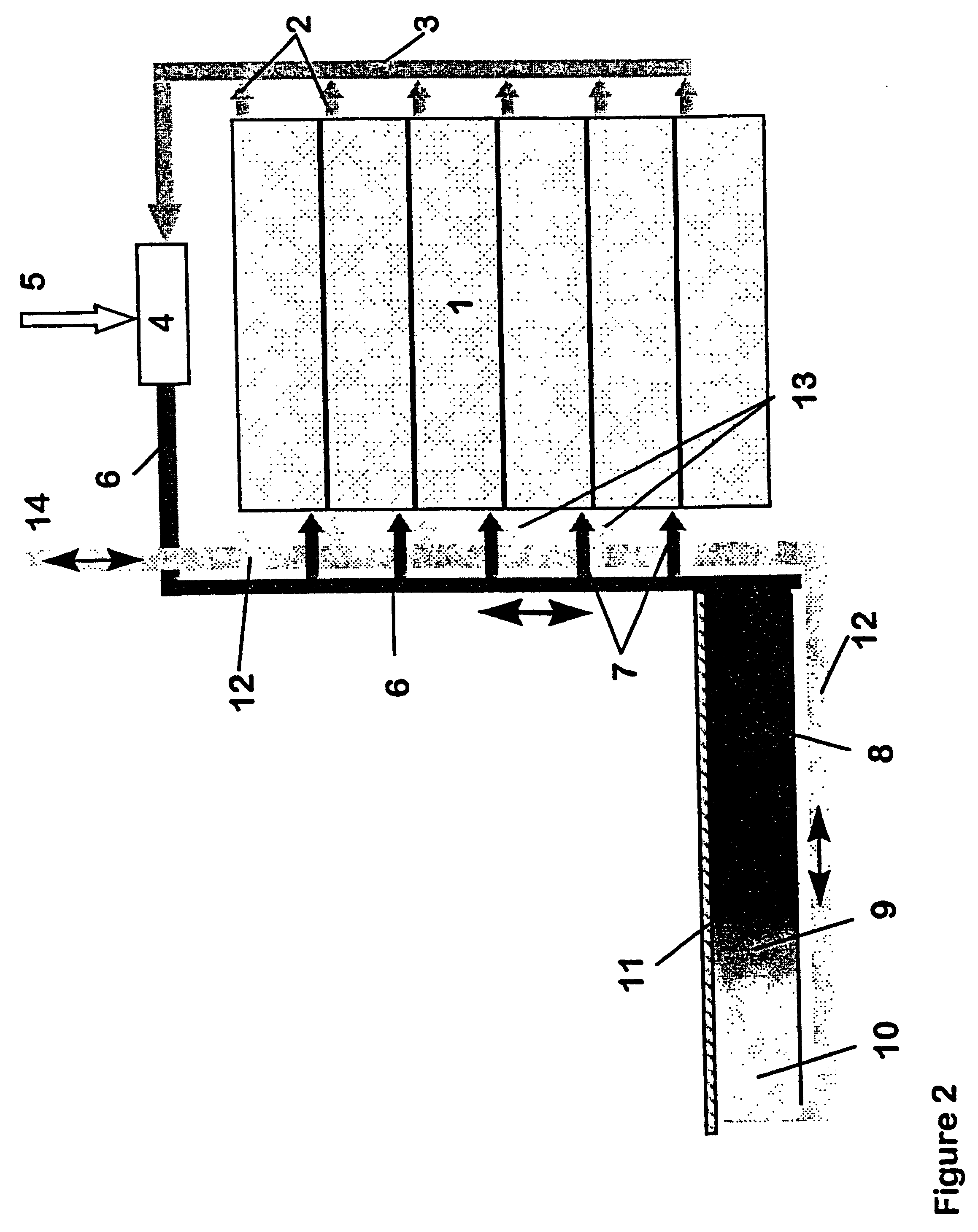Method and apparatus for heating and cooling of buildings
a technology for heating and cooling buildings and buildings, applied in lighting and heating apparatus, heating types, applications, etc., can solve the problems of low thermal conduction, high investment cost, and inability to meet the needs so as to achieve the lowest heat extraction efficiency, reduce the heat-pump heat-pump capacity, and enhance the effect of small-scale heat-pump and thermal storag
- Summary
- Abstract
- Description
- Claims
- Application Information
AI Technical Summary
Benefits of technology
Problems solved by technology
Method used
Image
Examples
example 2
This example gives an example of a preferred embodiment of the invention that is suitable for cold climates and in some coastal climates where the need for active cooling is unlikely to occur. This embodiment is exactly similar to the embodiment of example 1, except that heat-pump 33, the right branch of duct 6 with 2-way flow diverter 28, and duct 16 with 2-way flow diverter 29 and discharge outlet 20 is omitted.
example 3
This example gives an example of a preferred embodiment of the invention that is suitable for warm climates where the need for active heating is unlikely to occur. This embodiment is exactly similar to the embodiment of example 1, except that heat-pump 4 with the left branch of duct 6 with 2-way flow diverter 26, fresh air inlet 5, and discharge outlet 20 is omitted.
PUM
 Login to View More
Login to View More Abstract
Description
Claims
Application Information
 Login to View More
Login to View More - R&D
- Intellectual Property
- Life Sciences
- Materials
- Tech Scout
- Unparalleled Data Quality
- Higher Quality Content
- 60% Fewer Hallucinations
Browse by: Latest US Patents, China's latest patents, Technical Efficacy Thesaurus, Application Domain, Technology Topic, Popular Technical Reports.
© 2025 PatSnap. All rights reserved.Legal|Privacy policy|Modern Slavery Act Transparency Statement|Sitemap|About US| Contact US: help@patsnap.com



